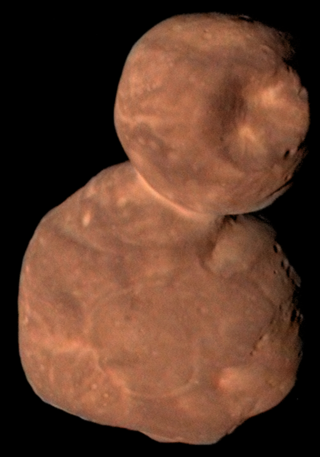
In January 2019, the New Horizons spacecraft flew by the small TNO Arrokoth, which is a contact binary located in the dynamically Cold Classical population. Unfortunately, the Arrokoth flyby left scientists with a large number of unanswered questions regarding contact binaries. To answer some of these questions, Audrey Thirouin and her team are looking to answer some of these questions by discovering and characterizing contact binaries to constrain where, how many, and how the contact binaries have formed.
Finding contact binaries at the edge of our Solar System is difficult. The most efficient technique to find a contact binary is through its rotational lightcurve (periodic variation of an object’s brightness as a function of time due to its rotation). The lightcurve of a contact binary is easily identifiable with large variability, a V-shape at the minimum, and an inverted U-shape at the maximum of brightness.
Using the Lowell Discovery Telescope (LDT) and the Magellan Telescope in Chile, the team has found 16 of the 17 contact binaries in the trans-Neptunian belt discovered with the lightcurve technique. All systems have been characterized which means that the team has obtained their rotational lightcurve and their surface colors. They estimate that the dynamically Cold Classical population (where Arrokoth is) has a deficit of contact binaries, but some mean motion resonances with Neptune have an excess of contact binaries. However, most of the contact binaries have a very red to ultra-red surface which is the typical color of the dynamically Cold Classical population. Therefore, it is possible that the contact binaries found so far originated in the dynamically Cold Classical population but managed to escape and are now trapped in different populations.